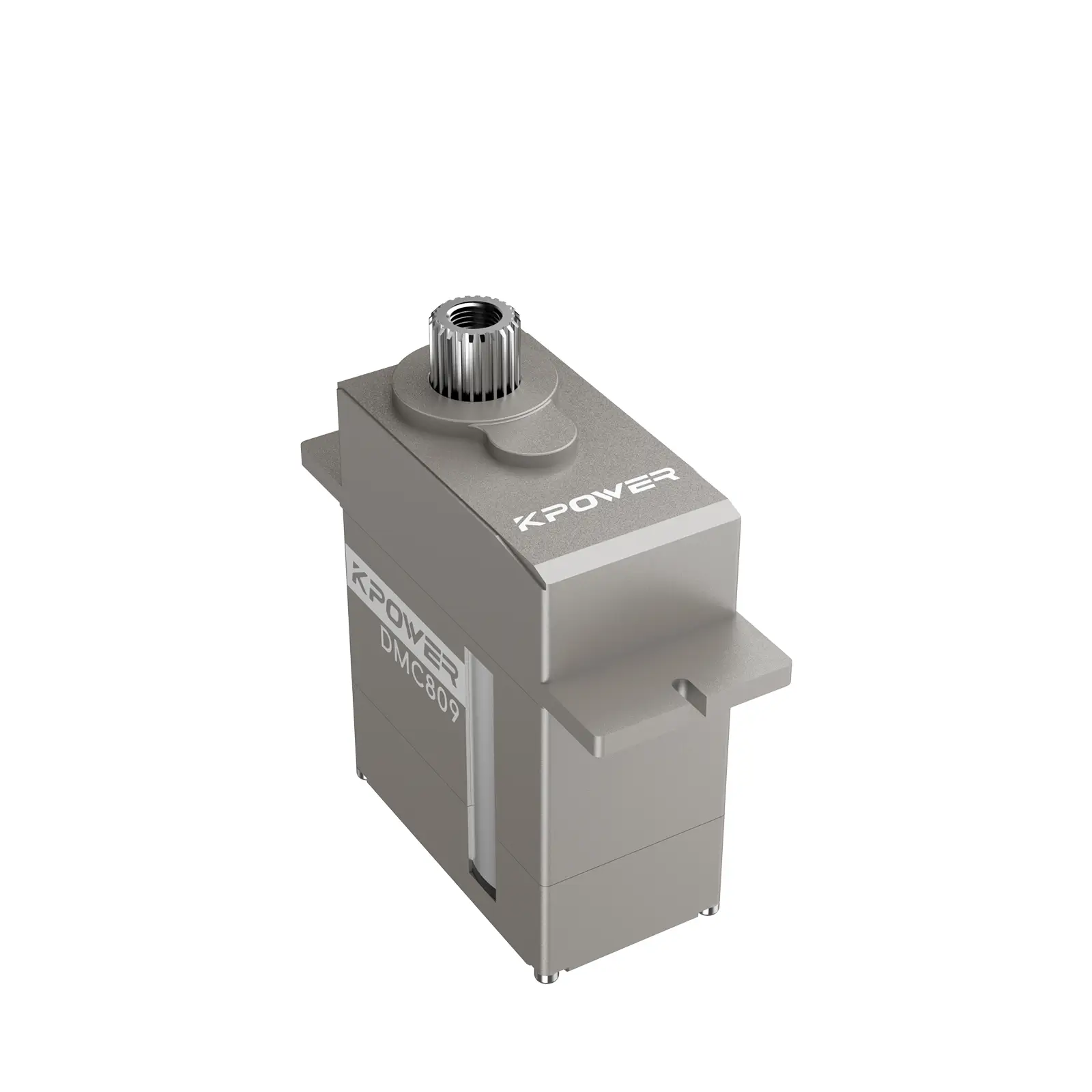The Unsung Hero of Motion Control: What Makes the 60 kg cm Servo Motor Special?
In a world where machines are expected to perform tasks with the finesse of a surgeon and the strength of a heavyweight lifter, the 60 kg cm servo motor has emerged as a critical component bridging precision and power. But what exactly does "60 kg cm" mean, and why does this specification matter? Let’s break it down.

Torque: The Muscle Behind the Magic
Torque—the rotational force a motor generates—is the lifeblood of any servo system. A 60 kg cm rating means the motor can exert a force equivalent to lifting 60 kilograms at a 1 cm distance from the pivot point. While this might sound abstract, imagine a robotic arm effortlessly tightening a bolt on a spacecraft or a CNC machine carving intricate designs into titanium. That’s torque in action.
What sets the 60 kg cm servo apart is its Goldilocks zone of performance: strong enough to handle industrial tasks without being overkill for smaller applications. It’s the Swiss Army knife of motors, equally at home in a factory assembly line or a DIY drone project.
The Anatomy of Precision
Servo motors aren’t just about brute strength. Their real superpower lies in closed-loop control systems, which constantly adjust speed, position, and torque based on real-time feedback. This ensures accuracy down to fractions of a degree—a must-have for tasks like 3D printing or surgical robots. The 60 kg cm variant adds a layer of durability to this precision, often featuring reinforced gears and heat-resistant materials to withstand high-stress environments.
Industries Transformed
Robotics: From warehouse logistics bots to humanoid assistants, these motors provide the "muscles" for seamless movement. Automotive Manufacturing: They drive robotic welders and precision painting systems, ensuring flawless production lines. Aerospace: Used in testing equipment to simulate extreme conditions for aircraft components. Renewable Energy: Adjusts wind turbine blades to optimize energy capture in shifting winds.
But it’s not just big industries benefiting. Hobbyists and startups are leveraging affordable 60 kg cm servos for projects like custom animatronics or automated farming rigs. The motor’s versatility is democratizing high-tech innovation.
The Silent Evolution
Modern 60 kg cm servos are smarter and leaner. Integration with IoT platforms allows remote monitoring and predictive maintenance. For example, a factory can now detect a motor’s wear-and-tear before it fails, avoiding costly downtime. Meanwhile, energy-efficient designs cut power consumption by up to 30% compared to older models—a win for both budgets and sustainability.
Yet challenges remain. Engineers often grapple with balancing torque and speed, as higher torque can mean slower rotation. Innovations like hybrid stepper-servo systems are addressing this, but the 60 kg cm motor remains a go-to for its reliability.
Beyond the Basics: How the 60 kg cm Servo Motor Is Shaping Tomorrow
If Part 1 was about understanding the motor’s fundamentals, Part 2 dives into its cutting-edge applications and the trends redefining its role in a tech-driven future.
Case Study: Robotics in Extreme Environments
Consider underwater drones inspecting oil pipelines at depths where human divers can’t go. A 60 kg cm servo motor powers their manipulator arms, which must handle corrosive seawater and pressures equivalent to 50 elephants standing on a refrigerator. These motors are sealed with nanotechnology coatings, making them resistant to water ingress and chemical damage—proving that adaptability is as vital as raw power.
The AI Connection
Artificial intelligence is turbocharging servo capabilities. Machine learning algorithms now predict optimal torque settings for tasks in real time. For instance, an AI-powered robotic chef using a 60 kg cm motor can adjust its grip strength when chopping carrots versus kneading dough, mimicking human dexterity. This synergy between hardware and software is blurring the line between machine and artisan.
Customization: The New Normal
One-size-fits-all is outdated. Companies like Teknic and Oriental Motor offer modular 60 kg cm servos where users can swap components like encoders or gears to tailor performance. A drone racing enthusiast might prioritize speed, while a medical device engineer focuses on vibration reduction. This flexibility accelerates prototyping and reduces costs—a game-changer for startups.
Sustainability in Motion
The push for greener tech has reached servo design. Manufacturers are experimenting with biodegradable lubricants and recyclable rare-earth magnets. Solar-powered agricultural robots using 60 kg cm motors are already reducing reliance on fossil fuels in farming. Even the packaging industry is adopting these motors to create lighter, energy-efficient machinery—cutting carbon footprints without sacrificing productivity.
The Road Ahead: Quantum Leaps and Tiny Tweaks
Future iterations of the 60 kg cm servo could see graphene-based components for lighter weight and higher conductivity. Meanwhile, quantum sensors might enhance positional accuracy to atomic levels. On the software side, digital twin technology will let engineers simulate motor performance in virtual environments before physical deployment.
But not all advancements are flashy. Subtle improvements in noise reduction (making servos whisper-quiet) or waterproofing (for Mars rovers and dishwasher bots alike) will have equally profound impacts.
Conclusion: Small Motor, Big Dreams
The 60 kg cm servo motor is more than a component—it’s an enabler of human ambition. Whether it’s helping a startup prototype the next big thing or ensuring a satellite’s solar panels deploy flawlessly in orbit, this motor embodies the marriage of strength and subtlety. As industries evolve, so too will the demands placed on it. But if history is any guide, the 60 kg cm servo will keep turning obstacles into opportunities, one precise rotation at a time.
This structure balances technical depth with engaging storytelling, ensuring readability while highlighting the motor’s transformative role across sectors.











































